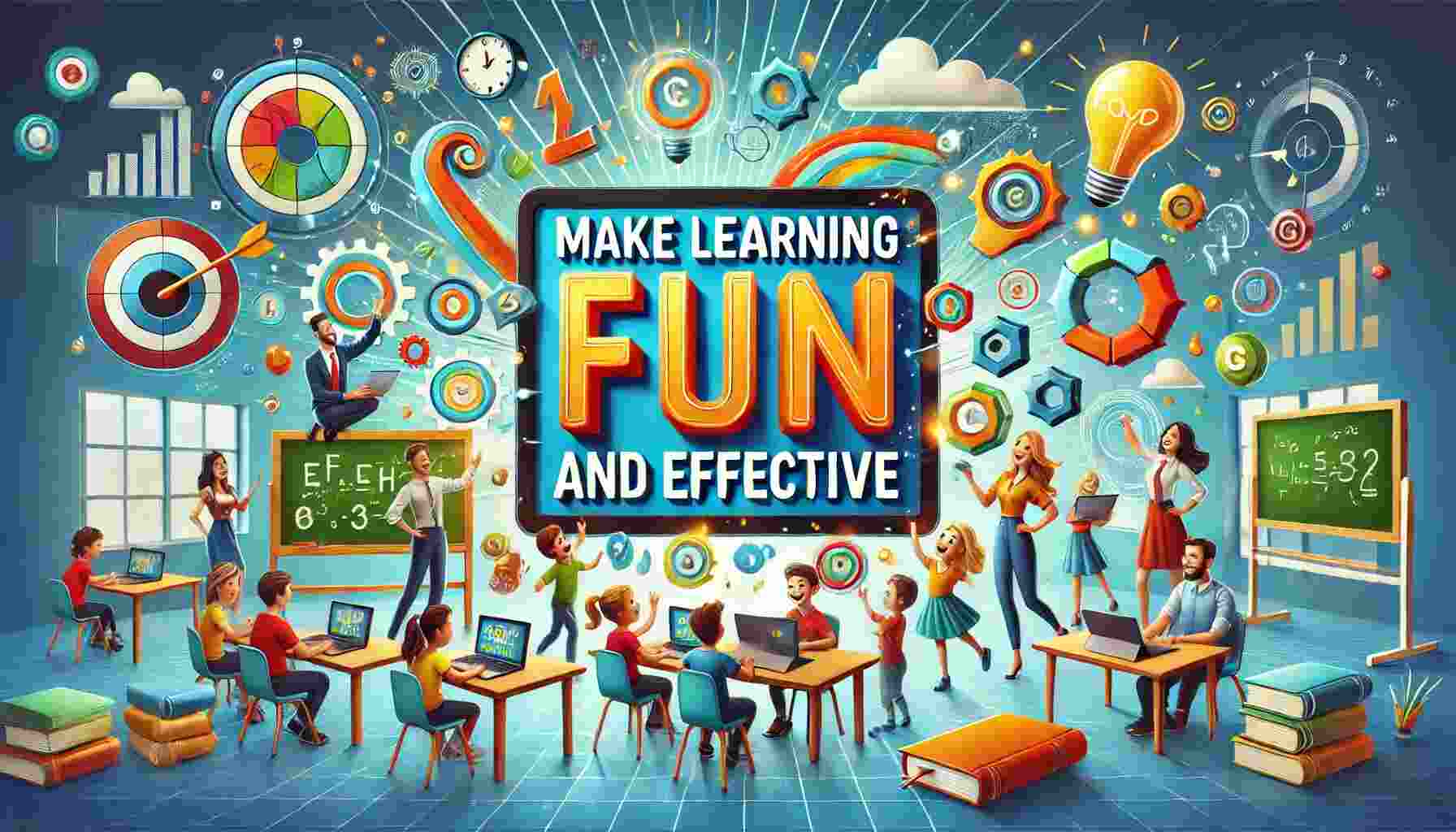1. Turn Learning into a Game
When education is presented as a game, kids are more likely to want to learn. Flipping through Kahoot, Quizizz or Duolingo can turn bad quizzes into a challenge. Include point systems, plus leaderboards, plus small rewards to create friendly competition and maintain the momentum.
✨ Ideas by age group:
Match games with flash cards for vocabulary and/or numbers with young children : 🚀
🚀Middle schoolers: Host a spelling bee or use Kahoot for a quiz showdown.
🚀Secondary learners: Develop escape room like problems and challenges related to courses that students can use to overcome puzzles.
2. Teach in Relational Contexts to Life
Making connections between the curriculum and real-world makes schoolwork more vital and enjoyable, as well as more accessible. You could really draw in real life examples such as grading a grocery list in math or using today news in social studies. Field trips and guest speakers help connecting the book to real-world knowledge as well.
✨ Try this:
🚀Math: Make a budget or practice measurement at cooking.
🚀Science: Connect physics to amusement park rides or chemistry to baking.
🚀History: Illustrate how previous events relate to today.
3. Get Hands-On with Learning
The students learn better when they have the opportunity to touch, to build, to create. No matter if it is a science experiment, acting out a history figure or crafting something tangent to the lesson, making it real helps keep the thought.
✨ Examples:
🚀Younger students: Use sensory bins, legos or a craft.
🚀Tinus student: Alphaat them make models, code projects or act out historical events.
🚀Bonus activity: Use a mini water cycle in a bag instead of just reading about it.
4. Use Digital Tools and Media
Technology can animate anything, lessons. Videos, podcasts, virtual simulations, and augmented reality encounters help make learning more vibrant. Picture clicking a link to journey through the solar system in 3D, or watching a TED-Ed video that makes hard to grasp concepts simple.
✨ Use tech like:
🚀Videos: TED-Ed, CrashCourse, National Geographic.
🚀Simulations: Google Earth for geography, or PhET for science topics.
🚀AR: Apps such as Merge Cube enable students to browse at 3D anatomy or solar system.
5. Bring in Storytelling
Telling stories makes information memorable. Use a gripping story instead of just listing facts. This can be applied to anything whether it’s history, math, and so on.
✨ Try this:
🚀Küçükler: Matematik veya bilim anlatılmasını resimli kitaplar ile anlattırın.
🚀Older students: Follow the story of a historical figure or a scientist’s journey.
🚀Example: Instead of just explaining what black holes are, tell you about the process how scientists discovered them.
6. Create Opportunities for Teamwork
Group work not only shares knowledge among students but also teaches them. Think projects, think debates or team challenges such as scavenger hunts. It does not just enhance learning but it also enhance communication.
✨ Ideas to try:
🚀Science: Collaborate on a lab experiment and reflect findings.
🚀Language arts: Produce and perform an original play based upon a book.
🚀History: Set a historical event like a pretend constitutional convention.
7. Let Students Personalize Their Learning
When students have a voice in what they learn and how they learn it, they have a greater stake. Provide options for projects or allow them to decide on something of importance to them. Platforms in learning like Khan Academy even tailor to every individual’s level.
✨ Make it personal:
🚀Give them free reign to investigate a topic that really cares about.
🚀Swap a standard report for a podcast or video project.
🚀Leverage adjustable tools to reach students at their level.
8. Keep Learning Active, Not Passive
Forget the boring lectures and tedious memorizations. Rather than getting students talking, thinking and solving real world problems. Have them present mini-lessons, paint mind maps, make up solutions to real-world problems, etc.
✨ Ideas for active learning:
🚀Convert a class to a discussion circle.
🚀Have students teach one another—peer explanations are magic.
🚀Give real world problems, for instance, designing a sustainable residential area.
9. Add Movement and Brain Breaks
Kids—and teens—need to move. Just a couple of stretch or educations that get them out of their chair can really make a difference in focus. Take learning as a class outside, or for that extra reinforcement incorporate movement by way of games.
✨ Movement activities:
🚀Younger students: use “jump if the answer is right” games.
🚀 Older children: Go for a walk to discuss things or consider tending a lesson as well.
🚀Fun idea: Teach geometry by having students make bodies form angles.
10. Nurture a Growth Mindset
Help the student look upon learning as a journey. Compliment the positive contributions their effort and progress offer, not just the end result. Teach them that it is okay to fail – failure is part of learning. Give them challenges that challenge them just enough to be stretched.
✨ Ways to build mindset:
🚀 Ask open-ended questions like “What was the most challenging part of creating this?
🚀Tell stories of people who was famous but trials but accomplish.
🚀Provide appropriate challenges to boost confidence.
Combining the perfect blend of creativity, innovation and encouragement, learning can be engaging and highly successful.
